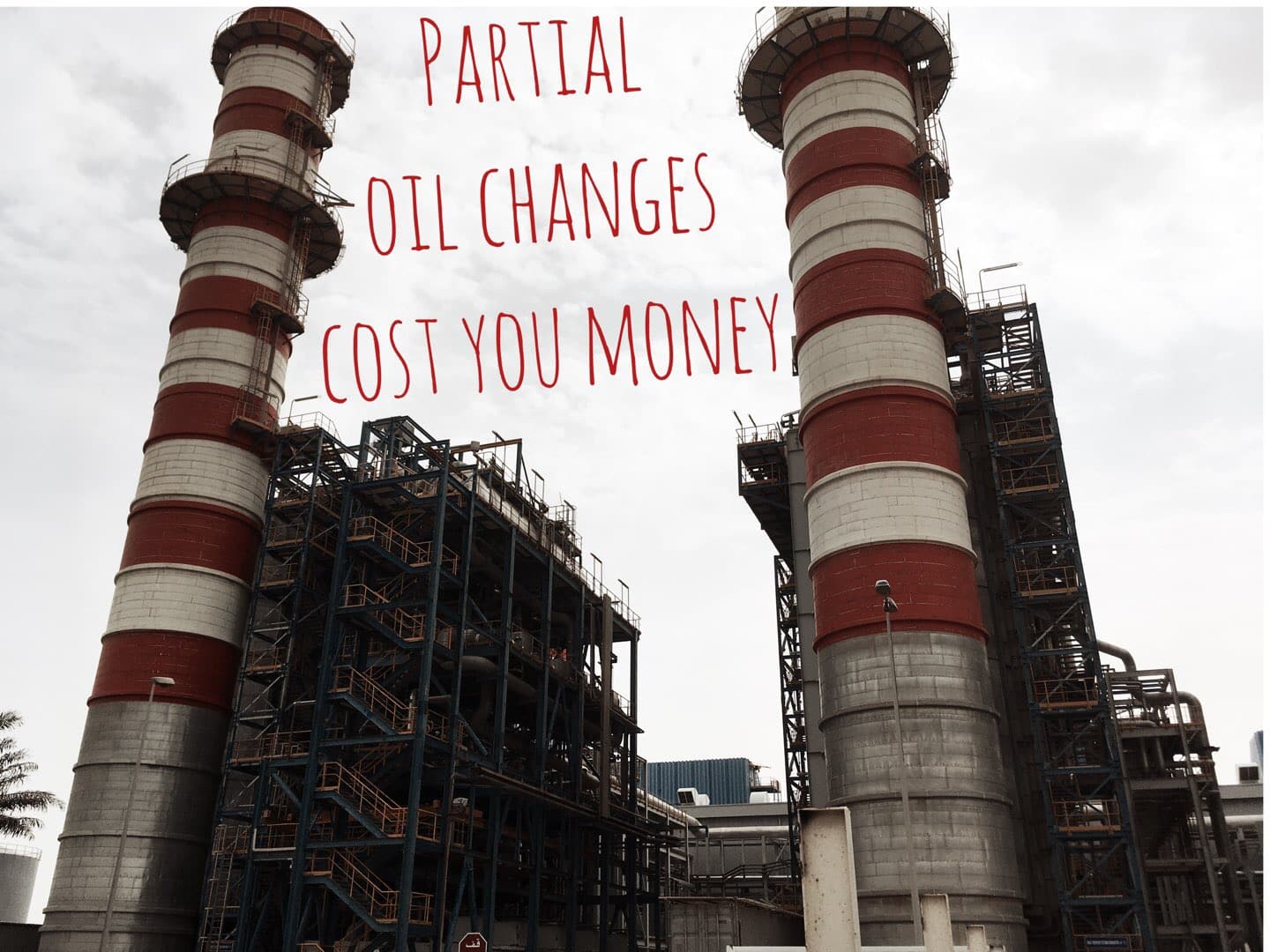This article will answer the following questions:
- How to reduce lube oils costs and cheaper lubricant bills?
- How to extend oil drain change intervals?
- How to effectively plan cheaper oil changes?
If it costs you £50k to change your oil you are naturally going to be cautious about doing so without needing to. So traditional approaches of changing your oil E.g. every 3 years don’t really seem to add up if your oil could go for 4 years, whilst the cost of the machinery failure makes you want to know when it has prematurely aged at 2 years. This is why in large lubricated systems such as steam and gas turbines, oil condition monitoring is used to accurately determine the time when the oil is ready to change. This is done through tests of lubricant performance such as oxidation stability, varnish potential, water separability and anti-corrosion properties. This type of testing is often referred to as a turbine health check and can sometimes require up to 1L of oil to perform the extensive testing.
However when the cost to change is more than you can afford (or have budgeted for) a common practice is to only partially change the oil, termed sweetening. This gives a short term cash flow benefit in that you can spend E.g. £25k today rather than the full £50k, but in the long term it costs more.
This is because oxidation promotes more oxidation. So if you take an oil with 1 month of life left and add an oil with 5 years of expected life, with a 50% oil change you do not get the mid point of around 2.5 years of life. This is because the oxidised oil from the original oil starts to react with the nice new oil as soon as it enters the turbine and starts to promote oxidation straight away. So you may get only an additional 1 year before the oil is back to 1 month of life again.
In fact for one client we did some testing to get optimum RPVOT values and they needed to add nearly 65% new oil to get half way on the RPVOT on the new product. Naturally this will vary from turbine to turbine, but it illustrates the point that the addition of new oil is not a linear benefit. So despite the initial gain in money saved what may have been £25k in year 1 may end up another £70k in more regular replacements to achieve the 5 years from the complete flush in the first place.
The problem why this situation often occurs is lack of planning. Not that the accountants or the maintenance team have done anything wrong, but if you only take an oil sample every 6 months or annually as is common place then it can be too little notice period before you know your oil has deteriorated. However if the team took OEM recommended sampling intervals E.g. monthly as recommended by many manufacturers, although this does increase your sampling cost 6 to 12 fold, it gives you much earlier warning of an upcoming oil change as you can trend the oil depletion rate. This may sound like a clever tactic by a lab to get more samples, but it is really just common sense in that the more data you have the sooner you can start allocating budget to potential full oil changes and give cost savings that make the oil sampling increased costs look like spare change in comparison.
Don’t believe me? Then speak to your trusted OCM laboratory, turbine OEM or lubricant manufacturer and ask their advise. In reality many of you will still go for partial oil changes and annual samples, but hopefully this article has given you some food for thought when your next budget review comes up.


